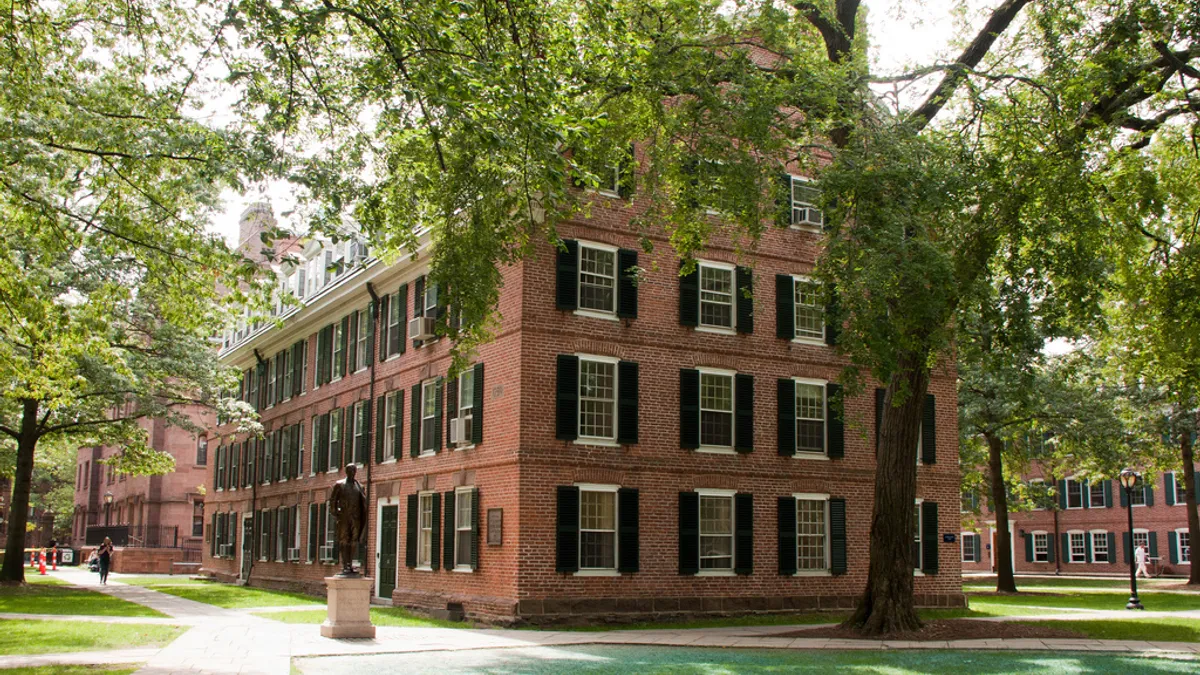Dive Brief:
- The costs associated with such luxury dorm construction — which many institutions have embarked on for the last decade and a half as a way to entice students to campus — may turn potential students away from institutitons, reports The Atlantic.
- Some colleges and universities are moving in the opposite direction, offering smaller dormitories at a reduced cost. Georgia State University offers simpler, less costly dorm options which include a dining plan — and it has become so popular with students, the institution had to build more.
- And as higher education faces smaller budgets and declining enrollment, the approach for building luxury dorms is not just putting students in debt, but also the institution. And experts argue such amenities may actually distract students from their studies and discourage them from being more friendly with their peers.
Dive Insight:
University of Maryland System Chancellor Robert Caret is on the record as saying the cost of educating students has not changed in the last 40 years, but the need to add amenities like rock-climbing walls, state-of-the-art fitness centers and fully-loaded student unions to attract these same students who are unwilling to pay for them is driving up the cost. Finding a balance between adding what amounts to social value to the campus without hitting the breaking point at which students will refuse to attend.
Kristin Bailey Wilson, an associate professor of Educational Administration, Leadership and Research in the College of Education and Behavioral Sciences at Western Kentucky University, recently decried a tendency towards "cheap academic infrastructure" — the opportunity cost of offering shiny new buildings and amenities on campus.
To ensure that campus amenities and dormitory settings do not lead to "sticker shock" for potential student applicants that may turn them away from enrolling, higher ed administrators could work to reconsider what types of amenities are being offered for their students, and if they match the needs and wants of student applicants that may be substantively removed from their predecessors in terms of their requirements. Earlier this year, Amarillo College in Texas announced a reconfiguring of its facilities, changing the old campus library into a new center specializing in services like a food pantry, tutoring center and a clothing closet. The school's president, Russell Lowery-Hart said the change occurred after a data analysis of the "typical" Amarillo student, finding that the conventional student profile for the school was actually fairly non-traditional.
Lowery-Hart used an assessment of the student population's needs to reconfigure the campus to better service students, and dormitory housing can be similar. Selective institutions could incorporate services for tutoring onto the grounds of a dorm room, or create amenities and quiet spaces for adult learners to separate interested parties from some of the noise and rambunctiousness that can be common in campus life. By assessing student applicants and finding what they are asking for, colleges and universities may be able to return to touting amenities as a genuine good, rather than a poor investment.









